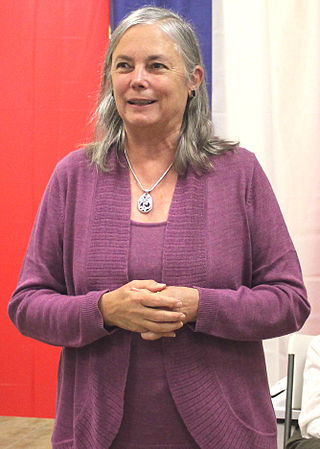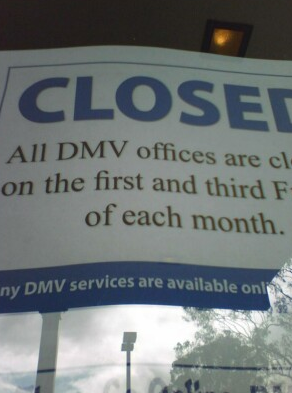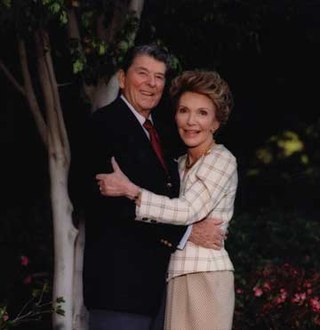Related Research Articles

Arnold Alois Schwarzenegger is an Austrian and American actor, businessman, filmmaker, former politician, and former professional bodybuilder best known for his roles in high-profile action movies. He served as the 38th governor of California from 2003 to 2011 and was among Time magazine's 100 most influential people in the world in 2004 and 2007.
The California Air Resources Board is an agency of the government of California that aims to reduce air pollution. Established in 1967 when then-governor Ronald Reagan signed the Mulford-Carrell Act, combining the Bureau of Air Sanitation and the Motor Vehicle Pollution Control Board, CARB is a department within the cabinet-level California Environmental Protection Agency.

The California Environmental Quality Act is a California statute passed in 1970 and signed in to law by then-governor Ronald Reagan, shortly after the United States federal government passed the National Environmental Policy Act (NEPA), to institute a statewide policy of environmental protection. CEQA does not directly regulate land uses, but instead requires state and local agencies within California to follow a protocol of analysis and public disclosure of environmental impacts of proposed projects and, in a departure from NEPA, adopt all feasible measures to mitigate those impacts. CEQA makes environmental protection a mandatory part of every California state and local (public) agency's decision making process. It has also become the basis for numerous lawsuits concerning public and private projects.

The California Public Utilities Commission is a regulatory agency that regulates privately owned public utilities in the state of California, including electric power, telecommunications, natural gas and water companies. In addition, the CPUC regulates common carriers, including household goods movers, limousines, rideshare services, self-driving cars, and rail crossing safety. The CPUC has headquarters in the Civic Center district of San Francisco, and field offices in Los Angeles and Sacramento.
World War Zero is an American coalition launched by John Kerry in 2019 to fight the climate crisis. The main goal of the coalition is to hold more than ten million “climate conversations” in 2020 with citizens across the political spectrum.
The Global Warming Solutions Act of 2006, or Assembly Bill (AB) 32, is a California State Law that fights global warming by establishing a comprehensive program to reduce greenhouse gas emissions from all sources throughout the state. AB32 was co-authored by then-Assemblymember Fran Pavley and then-Speaker of the California Assembly Fabian Nunez and signed into law by Governor Arnold Schwarzenegger on September 27, 2006.

The governorship of Arnold Schwarzenegger began in 2003, when Arnold Schwarzenegger ran for Governor of California in a recall election. He was subsequently elected Governor when the previous governor Gray Davis was recalled and Schwarzenegger placed first among replacement candidates. Schwarzenegger served the remainder of Davis' incomplete term between 2003 and 2007. Schwarzenegger was then reelected to a second term in 2006, serving out this full term and leaving office in January 2011. Schwarzenegger was unable to run for a third term due to term limits imposed by Constitution of California.

Frances J. "Fran" Pavley is an American politician who served two terms in the California State Senate and three terms in the California State Assembly. A Democrat, she last represented the 27th Senate District, which encompasses the Conejo Valley, and portions of the San Fernando and Santa Clarita Valleys. Due to term limits in California, Senator Pavley completed her legislative career in 2016. She is currently working as the Environmental Policy Director for the USC Schwarzenegger Institute.

The United States produced 5.2 billion metric tons of carbon dioxide equivalent greenhouse gas (GHG) emissions in 2020, the second largest in the world after greenhouse gas emissions by China and among the countries with the highest greenhouse gas emissions per person. In 2019 China is estimated to have emitted 27% of world GHG, followed by the United States with 11%, then India with 6.6%. In total the United States has emitted a quarter of world GHG, more than any other country. Annual emissions are over 15 tons per person and, amongst the top eight emitters, is the highest country by greenhouse gas emissions per person. However, the IEA estimates that the richest decile in the US emits over 55 tonnes of CO2 per capita each year. Because coal-fired power stations are gradually shutting down, in the 2010s emissions from electricity generation fell to second place behind transportation which is now the largest single source. In 2020, 27% of the GHG emissions of the United States were from transportation, 25% from electricity, 24% from industry, 13% from commercial and residential buildings and 11% from agriculture. In 2021, the electric power sector was the second largest source of U.S. greenhouse gas emissions, accounting for 25% of the U.S. total. These greenhouse gas emissions are contributing to climate change in the United States, as well as worldwide.
The California Department of Resources Recycling and Recovery is a branch of the California Environmental Protection Agency that oversees the state's waste management, recycling, and waste reduction programs. CalRecycle was established in 2010 to replace the California Integrated Waste Management Board. It is known for administering the California Redemption Value (CRV) program, among other responsibilities.

The U.S. state of California had a budget crisis in which it faced a shortfall of at least $11.2 billion, projected to top $40 billion over the 2009–2010 fiscal years.
The climate change policy of the United States has major impacts on global climate change and global climate change mitigation. This is because the United States is the second largest emitter of greenhouse gasses in the world after China, and is among the countries with the highest greenhouse gas emissions per person in the world. In total, the United States has emitted over a trillion metric tons of greenhouse gasses, more than any country in the world.

Ronald Reagan Day is a day of recognition that occurs every February 6, starting in 2011, in the state of California for Ronald Reagan, who was that state's governor from 1967 to 1975 and President of the United States from 1981 to 1989.

Proposition 23 was a California ballot proposition that was on the November 2, 2010 California statewide ballot. It was defeated by California voters during the statewide election by a 23% margin. If passed, it would have suspended AB 32, a law enacted in 2006, legally referred to its long name, the Global Warming Solutions Act of 2006. Sponsors of the initiative referred to their measure as the California Jobs Initiative while opponents called it the Dirty Energy Prop.

Terrance Arthur Tamminen is an author, lecturer, and strategist on energy and the environment. In 2003, California Governor Arnold Schwarzenegger appointed him as Secretary of the California Environmental Protection Agency. In December 2004, he was appointed Cabinet Secretary, the Chief Policy Advisor to the Governor. He continues to advise the former governor, and other regional, national, and international leaders, on energy and environmental policy.
The R20 – Regions of Climate Action is a non-profit environmental organization founded in September 2011, by former governor of California, Arnold Schwarzenegger, with the support of the United Nations. R20 is a coalition of sub-national governments, private companies, international organizations, NGOs, and academic & financial institutions. Its mission is to accelerate sub-national infrastructure investments in the green economy to meaningfully contribute to the Sustainable Development Goals (SDGs). The NGO operates at the sub-national level as R20 believes sub-national governments constitute a powerful force for change and are best positioned to take action & implement green projects.

Mary Dolores Nichols is an American attorney and government official who has been the chairwoman of the California Air Resources Board (CARB) since 2007. She also held that post between 1979 and 1983. From 1999 to 2003, she served as secretary of the California Natural Resources Agency in the cabinet of then-Governor Gray Davis. Due to her efforts to combat global warming, she has been dubbed "the Queen of Green", and described as "the most influential environmental regulator in history."

The Governors’ Climate and Forests Task Force is a sub-national collaboration between 38 states and provinces from Brazil, Colombia, Ecuador, Indonesia, Ivory Coast, Mexico, Nigeria, Peru, Spain, and the United States. The Task Force is designed to support jurisdictional approaches to low emissions rural development and reduced emissions from deforestation and land use (REDD+), specifically through performance-based payment schemes and national or state-based greenhouse gas (GHG) compliance regimes.

The California Global Warming Solutions Act of 2016: emissions limit, or SB-32, is a California Senate bill expanding upon AB-32 to reduce greenhouse gas (GHG) emissions. The lead author is Senator Fran Pavley and the principal co-author is Assemblymember Eduardo Garcia. SB-32 was signed into law on September 8, 2016, by Governor Edmund Gerald “Jerry” Brown Jr. SB-32 sets into law the mandated reduction target in GHG emissions as written into Executive Order B-30-15.

As the most populous state in the United States, California's climate policies influence both global climate change and federal climate policy. In line with the views of climate scientists, the state of California has progressively passed emission-reduction legislation.
References
- ↑ "California Climate Change Executive Orders". State of California. Retrieved 6 December 2018.
- ↑ Schwarzenegger, Arnold (April 20, 2004). "Executive Order S-07-04". Governor of California. Archived from the original on 22 September 2006. Retrieved 6 December 2018.
- ↑ Schwarzenegger, Arnold (December 14, 2004). "Executive Order S-20-04" (PDF). Governor of California. Archived from the original (PDF) on 24 April 2005. Retrieved 6 December 2018.
- 1 2 Schwarzenegger, Arnold (June 1, 2005). "Executive Order S-3-05" (PDF). Governor of California. Retrieved 6 December 2018.
- ↑ Schwarzenegger, Arnold (April 25, 2006). "Executive Order S-06-06" (PDF). Governor of California. Retrieved 6 December 2018.
- ↑ Schwarzenegger, Arnold (October 18, 2006). "Executive Order S-20-06". Governor of California. Archived from the original on 13 September 2007. Retrieved 6 December 2018.
- ↑ Schwarzenegger, Arnold (January 18, 2007). "Executive Order S-01-07". Governor of California. Archived from the original on 26 October 2008. Retrieved 6 December 2018.
- ↑ Schwarzenegger, Arnold (November 14, 2008). "Executive Order S-13-08". Governor of California. Archived from the original on 24 November 2009. Retrieved 6 December 2018.
- ↑ Schwarzenegger, Arnold (November 17, 2008). "Executive Order S-14-08". Governor of California. Archived from the original on 24 November 2009. Retrieved 6 December 2018.
- ↑ Schwarzenegger, Arnold (September 15, 2009). "Executive Order S-21-09". Governor of California. Archived from the original on 23 November 2009. Retrieved 6 December 2018.
- ↑ Brown, Jerry (23 March 2012). "Executive Order B-16-12". Governor of California. Retrieved 27 March 2019.
- ↑ Brown, Jerry (25 April 2012). "Executive Order B-18-12" (PDF). Governor of California. Retrieved 6 December 2018.
- 1 2 Brown, Jerry (29 April 2015). "Executive Order B-30-15". Governor of California. Retrieved 27 March 2019.
- ↑ Brown, Jerry (17 July 2015). "Executive Order B-32-15". Governor of California. Retrieved 27 March 2019.
- ↑ Newsom, Gavin (23 September 2020). "Executive Order N-79-20" (PDF). Governor of California. Retrieved 23 September 2020.
- ↑ "California Executive Order S-3-05". State of California, Office of the Governor. June 1, 2005. Archived from the original on 22 September 2006. Retrieved 6 December 2018.
- ↑ California State Assembly. "An act to add Division 25.5 (commencing with Section 38500) to the Health and Safety Code, relating to air pollution". Session of the Legislature. Statutes of California. State of California. Ch. 488 p. 3419. direct URL
- ↑ California State Assembly. "An act to add Section 38566 to the Health and Safety Code, relating to greenhouse gases". Session of the Legislature. Statutes of California. State of California. Ch. 249. direct URL
- ↑ Megreian, Chris; Dillon, Liam (8 September 2016). "Gov. Brown signs sweeping legislation to combat climate change". Los Angeles Times . Retrieved 21 July 2017.
- ↑ California State Assembly. "An act to amend, repeal, and add Sections 38501, 38562, and 38594 of, and to add and repeal Sections 38505.5, 38590.1, 38591.1, 38591.2, 38591.3, 38592.5, and 38592.6 of, the Health and Safety Code, to add Section 4213.05 to, to add Article 3 (commencing with Section 4229) to Chapter 1.5 of Part 2 of Division 4 of, and to repeal Chapter 1.5 (commencing with Section 4210) of Part 2 of Division 4 of, the Public Resources Code, and to amend Section 6377.1 of the Revenue and Taxation Code, relating to public resources, and declaring the urgency thereof, to take effect immediately". Session of the Legislature. Statutes of California. State of California. Ch. 135. direct URL
- ↑ Megerian, Chris; Mason, Melanie (17 July 2017). "California Legislature extends state's cap-and-trade program in rare bipartisan effort to address climate change". Los Angeles Times. Retrieved 21 July 2017.
- ↑ "California Executive Order B-55-18" (PDF). State of California. September 10, 2018.